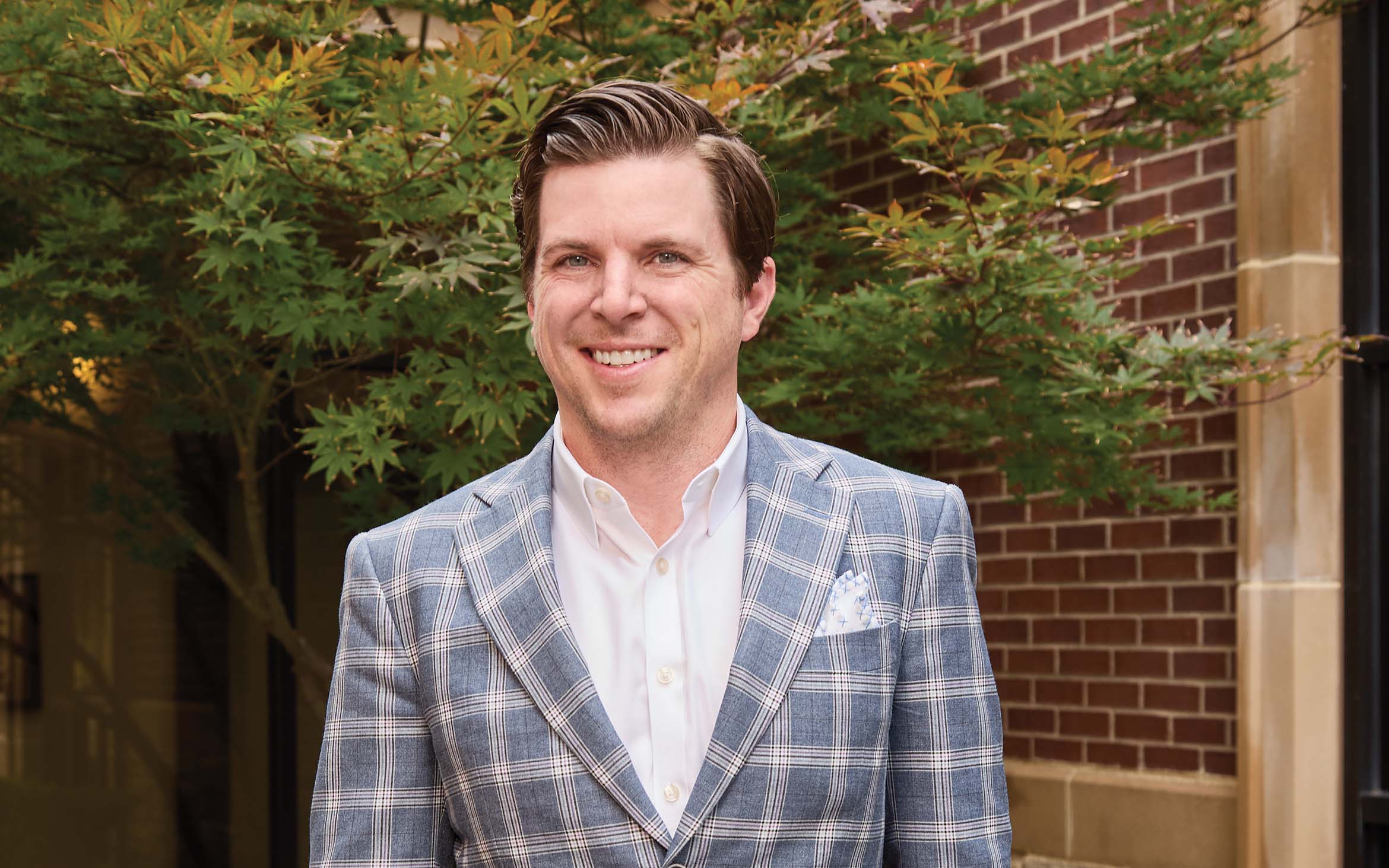Welcome, leaf peepers! Now that autumn is here, it’s time to take a road trip and meet the community banks that call New England home, making an impact on their communities and helping local tourism survive and thrive, year-round.
How New England banks are supporting the tourism industry
October 01, 2022 / By Ed Avis
Welcome, leaf peepers! Now that autumn is here, it’s time to take a road trip and meet the community banks that call New England home, making an impact on their communities and helping local tourism survive and thrive, year-round.

Our community banking road trip takes us from Danbury, Conn., to Derby, Vt.
The afternoon sunlight is subtle, pumpkins are changing to jack-o’-lanterns, and trees blaze orange and yellow. It’s fall, which means tourists are descending on New England, the perfect part of the country to experience autumn fully. The owners of businesses that cater to those travelers—hotels, inns, restaurants, wineries, farms, breweries and much more—hear their cash registers ringing.
Behind the scenes, community bankers are at work. They provide the counsel, funding and other banking services these businesses need. And in many cases, bank foundations donate to nonprofit tourism-related organizations, and volunteers from banks offer their time and labor. In short, community banks help keep tourism flourishing in New England, in autumn and year-round.
Travel with us as we visit five New England ICBA members helping tourism thrive in their communities.
Danbury, Conn.
Savings Bank of Danbury
Union Savings Bank

The world’s tallest Uncle Sam is in Danbury, Conn., also home to Union Savings Bank and Savings Bank of Danbury. Photo: Shutterstock
Our first stop is Danbury, Conn., home of the Danbury Railway Museum, Bear Mountain Reservation and Ives Trail Greenway. Oh, and of course, the world’s tallest Uncle Sam statue. The 38-foot-high patriot has welcomed visitors to Danbury since 1971.
Seeing the leaves turn in the fall is a major attraction to visitors in the Danbury area, but there’s much more to area’s tourism industry.
“In our part of western Connecticut, we’ve got a lot of nature and a lot of history,” notes Pat Kelley, senior vice president at $1.4 billion-asset Savings Bank of Danbury. “We do see a lot of tourism in the fall both for the leaf peepers, as we call them, and a lot of regional sports tourism, such as baseball and soccer tournaments. This time of the year, we also see a lot of people doing brewery tours and visiting vineyards.”
Cindy Merkle, president and CEO of $3.2 billion-asset Union Savings Bank, another Danbury community bank, also recognizes the value of tourism to her community.
“I wouldn’t say tourism is preponderant, but it brings a lot of consumers to the area who do not live here, and they spend money, so it is very supportive of the economy,” she says.
Both Savings Bank of Danbury and Union Savings Bank count many tourism-related businesses as clients. For example, Savings Bank of Danbury has financed multiple golf courses, movie theaters, regional sports facilities, breweries and a vineyard. Union Savings Bank’s customer roster includes restaurants, hotels, inns and farms-cum-wedding venues.
“We’re hearing from the local hotel operators that demand is very high. We’re hearing from the restaurant owners that demand is very high as well, and the sports facilities are at full tilt with activities.”—Pat Kelley, Savings Bank of Danbury
When COVID-19 crashed into Danbury, the value of these community banks to the tourism industry became especially evident. Some tourism-related businesses, such as hiking trails and a few tourist farms, were able to stay open and thrived, but in general, COVID was devastating to tourism businesses. Community banks helped many stay afloat through Paycheck Protection Program loans.
“In our market, we did over $15 million in PPP loans to businesses that fall into the tourism category, such as the restaurants and inns,” Merkle says. “A number of the restaurants were able to use those funds to convert to outdoor dining, or they changed their models to go to takeout.”
Kelley’s bank also helped many tourism-related businesses—including some that were not customers prior to COVID—with PPP loans. Golf courses, catering halls and theaters were among their clients that shuttered completely at the beginning of COVID and needed the PPP money just to survive. Other businesses were able to stay partially open.
“A [catering/event] venue of ours was the recipient of both PPP money and other federal stimulus programs,” Kelley says. “They pivoted their business substantially to deliver meals to those in need during that time. Now they are back to full tilt—there is heavy demand for bookings because everyone is ready to get back.”
Indeed, Greater Danbury’s tourism has rebounded, according to both community bankers.
“We’re hearing from the local hotel operators that demand is very high,” Kelley says. “We’re hearing from the restaurant owners that demand is very high as well, and the sports facilities are at full tilt with activities. So, we’ve seen a big rebound.”

Mountain biking is an important tourist draw to Derby, Vt., where Community National Bank is located. Photo: Franz Marc Frei/Getty Images
Lending is not the only way these community banks support their local tourism businesses; each also has a foundation that donates to tourism-related nonprofits. For example, Savings Bank of Danbury’s foundation supports the Mattatuck Museum in Waterbury, the Danbury Music Center, the historic Palace Theater in Waterbury Off Broadway Series and more. And the foundation of Union Savings Bank has provided grants to several theaters and playhouses, Merkle reports.
Volunteering is one more way these banks help keep tourism humming. “The nonprofit organizations that our employees volunteer for, whether it’s an agricultural fair in the northern market area or a 5K race or something like that, are fundamental to the health of the community,” Merkle says.
Salisbury, Conn.
National Iron Bank
Our autumn New England tour now heads north from Danbury to Salisbury, Conn. This town of about 4,200 people practically touches the neighboring states—in fact, the Massachusetts-New York-Connecticut tri-state marker sits in the northwest corner of the town.
Nearby Lime Rock State Park and Mount Riga State Park are great places to see the fall colors, and ambitious fall color seekers can access the Appalachian Trail near town. Water sports also attract visitors; sailing on Twin Lakes is a popular attraction.
“We’ve got a pretty good tourist area around here,” says Steven Cornell, president and CEO of $256 million-asset National Iron Bank. “Since we’re not far from New York City, people come up for the day. We have a couple of local breweries and high-end restaurants. Fall does help tourism because of the beauty; we have several orchards with apple picking and things like that.”
Among the tourist-related businesses that National Iron Bank counts as customers are farm stands, restaurants and inns. As so many community banks did, it helped sustain them during COVID.
“We did $20 million in PPP loans to restaurants, farms and other businesses and helped a lot of them survive,” Cornell says. “These are businesses that make our community really nice.”
Cornell was proactive when it came time to help. He made sure the tourism-related businesses in his community knew about the PPP program and how to apply.
“I went to a lot of the restaurants and inns about the PPP loans, because if we lost those, it would have been a terrible hit to the northwest corner of Connecticut,” he says. “It would have been a terrible thing if we lost some of these great inns, and I think 100% of them survived. At least one restaurant that I know of would not have survived without the PPP, and now they’re thriving. That was my biggest concern, because without those local businesses, we don’t have our community.”
Today, with COVID slowly receding, the tourism business in Cornell’s corner of Connecticut is looking healthy again.
“More and more people want to get out because they were tied down for so long,” he says. “The tourism business, at least what we’ve seen, has been very busy.”
Woodsville, N.H.
Woodsville Guaranty Savings Bank
Let’s travel northeast, skirting Vermont and into New Hampshire. Just west of White Mountain National Forest, we land in Woodsville, home to the charming Haverhill-Bath Covered Bridge, the Ammonoosuc Rail Trail and lovely Ricker Pond.
“We’re really a four-season destination,” says James Graham, president and CEO of $636 million-asset Woodsville Guaranty Savings Bank. “We’re nestled between the Green Mountains of Vermont and the White Mountains of New Hampshire. It’s a destination for hiking, canoeing and camping.”
Trails for all-terrain vehicles (ATVs) also draw a lot of tourists, Graham notes, and his community bank counts the campgrounds, motels and restaurants that serve those clients among its customers. Even the convenience stores that provide services for outdoor recreation are considered tourism-related bank clients.
Another tourism-related economic driver in Graham’s community is the second-home real estate market.
“The second-home buyers are coming from larger cities further south,” he explains. “Since we’re a four-season destination, my guess is they come here for summer activities and then again for skiing in the winter.”
Woodsville Guaranty Savings Bank helped many businesses, including non-customers, through COVID with PPP loans, and now things are looking up again.
“I would say the tourism industry has mostly fully recovered,” Graham says. “It appears that travel and tourism is just as strong now as it was before the pandemic. I’m in my office right now looking over the mountains and the Connecticut River—we’re really a recreational playground. Tourism is extremely important to our community.”

The Haverhill-Bath Covered Bridge that connects Bath and Woodsville, N.H.—home to Woodsville Guaranty Savings Bank—is listed on the National Register of Historic Places. Photo: Nicholas Erwin

A hiking trail crosses the Ammonoosuc River in the White Mountains of New Hampshire, near to Woodsville Guaranty Savings Bank. Photo: Xavier Ascanio / Alamy Stock Photo
Derby, Vt.
Community National Bank
Let’s travel north now into the Green Mountain National Forests and all the way to Derby, Vt., which is nearly at the border of Canada. Leaves ablaze are a key autumnal attraction in this part of the state, and the views around Burke Mountain and Jay’s Peak can be extraordinary.
But those attractions are just the beginning.
“Vermont is where people come to play, so tourism is really an underpinning of our economy during every season of the year,” says Kathryn Austin, president and CEO of $1 billion-asset Community National Bank, which has branches throughout central and northeast Vermont. “Fall is a beautiful and unique time here, and we welcome the leaf peepers, but summer—with our lakes and mountains—is also popular. And, of course, in the winter, skiing and snowmobiling draw a lot of people.”
“From the bank standpoint, a number of the restaurants and inns and landowners in that area are our customers. Kingdom Trails is a not-for-profit, but we support them financially and sponsor many of their activities and promotions, and we have bankers who serve on their board.”
—Kathryn Austin, Community National Bank
Another major tourism draw in the area, Austin says, is mountain biking. A nonprofit organization called the Kingdom Trails Association in Burke, Vt., brought together 104 landowners who have allowed mountain bike trails to run through their property, creating a vast network of trails throughout the area.
“So now there’s this really beautiful big trail system that’s well organized and maintained, and today the town of Burke gets more biker visits than skier visits,” Austin says.
“From the bank standpoint, a number of the restaurants and inns and landowners in that area are our customers. Kingdom Trails is a not-for-profit, but we support them financially and sponsor many of their activities and promotions, and we have bankers who serve on their board.”
That involvement—both financial and through volunteering—is replicated throughout the communities Community National Bank serves, Austin says.
And, of course, that support was most noticeable during COVID. Not only did the tourism businesses in the area suffer the same losses as those in other communities, but their pain was compounded by the fact that the Canadian border was closed during COVID, which eliminated a major source of tourists.
Community National Bank is an SBA lender and was able to quickly ramp up the PPP. It offered loans to customers and non-customers who were having trouble getting the money from their existing banks, Austin says.
“I think those loans were critical to these small businesses to just get by long enough to cover some of their expenses, keep their employees on payroll and make it through until they could reopen,” Austin says. “We understand that those businesses—restaurants and hotels—have to have their tables and beds full to stay in business. But they were very resilient. We saw restaurants shift quickly to curbside delivery, and other businesses found opportunities to reinvent themselves to adapt to what was safe to do and what their customers wanted them to do.”
Fortunately, tourism-related business is returning to normal, Austin says. Canadian license plates can again be seen on area roads, lodging facilities are filling up, and wedding venues are being booked again.
“In general, what we heard was much more positive this past summer,” she reports. “The last couple of summers were a start-stop situation, as we thought we could move ahead and then, ‘Whoops, maybe not.’ But this summer season felt so much more normal. People were out and about.”
Heading home
This autumn road trip through New England has taken us past historic sites, ski mountains, biking trails, covered bridges, sports venues and, of course, amazing natural areas with glorious views of multi-colored trees. These attractions and many more draw millions of tourists to this part of the country each year, and the businesses and organizations that serve them are essential to their communities.
Behind the scenes, community banks help those businesses and organizations thrive, even through difficult times.
“The tourism community was certainly hit the hardest by COVID and for the longest period of time, and they had the longest road back,” says Austin of Community National Bank. “And I think we all recognize the role community banks played in their recovery.”
Subscribe now
Sign up for the Independent Banker newsletter to receive twice-monthly emails about new issues and must-read content you might have missed.
Sponsored Content
Featured Webinars
Join ICBA Community
Interested in discussing this and other topics? Network with and learn from your peers with the app designed for community bankers.
Subscribe Today
Sign up for Independent Banker eNews to receive twice-monthly emails that alert you when a new issue drops and highlight must-read content you might have missed.
News Watch Today

Join the Conversation with ICBA Community
ICBA Community is an online platform led by community bankers to foster connections, collaborations, and discussions on industry news, best practices, and regulations, while promoting networking, mentorship, and member feedback to guide future initiatives.













